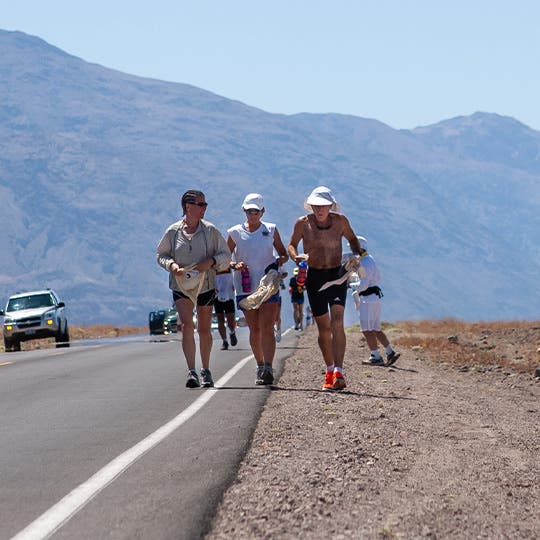The definition of an ultra-marathon is any distance more than 26.2 miles. Most ultras start at a 50k distance which is roughly 34 miles, then increase to 50 miles, 100k (64 miles), 100 miles, and up to 200 plus miles. Each race is different in how they approach having crews and pacers to support runners. For example, most 50-mile races do not allow a pacer, and some runners choose to run without any support on longer races of 100 and 200 plus miles. Each runner is different requiring individual support, whether they are an elite or novice ultra runner.
For those new to ultra running terminology, a crew for a runner is a person or group of people who support their runner before, during, and after a race. Responsibilities could include: training, traveling, presence at every aid station on the race course with supplies, pacing a runner on the course, massaging sore muscles, cleaning feet, fueling your athlete, and making sure they crosses the finish line. A pacer's job is to run alongside their runner, usually at night or during the second half of a race, for safety, to motivate, affirm they're taking in calories and hydrating, and staying on course. Depending on the distance, the racer could have one pacer, or a handful that each run portion of the course.


How To Select A Crew
Even though running an ultra is a solo sport, your crew is your team and your teammates are an important part of your journey.
1. Crew members must be motivating, have positive attitudes, and know how to handle their runners in hard situations.
2. Choose people who can commit to the date, long hours and harsh weather conditions. Sitting in the heat or rain for hours can be part of the job.
3. Although family members can be very supportive, they may not make the best crew members due to their lack of running experience or inability to push you when you want to quit.
4. Your Crew Chief must be assertive, a problem solver and decision maker. Pick someone that you trust to make the right decisions to get you across the finish line.
5. Plan crew meetings to ensure that your team knows their tasks, race logistics, and your individual needs.
6. Keep your crew happy by helping with travel fees and buying dinner or giving thank you gifts for their assistance and encouragement. This also may encourage them to help again at future races.


How To Be A Good Crew Member
You have committed to be there for your runner on race day (or days), to support them with their needs, and possibly pace them during sections of the race.
1. Attend crew meetings, ask questions, take notes, listen well and be organized.
2. COMMIT! Unless there is a last minute emergency, fully commit to your runner and be responsible with planning your own logistics such as child care, time off work, and transportation.
3. If you're pacing, TRAIN! Know the course and which sections you will pace including elevation and mileage. Train accordingly to be at either the same pace or slightly faster than your runner.
4. Understand that taking care of yourself is just as important as taking care of your runner. Ensure you are hydrating, taking in calories, sleeping when you can and regulating your temperature. If you experience issues, be transparent with the Crew Chief.
5. Know your runner! Do they prefer pacers to talk or stay quiet? Which foods work for them? What do they need in their pack? Do they tend to forget to put on certain items such as sunscreen, chafing rub, or a jacket when it gets cold?


Additional Crew and Pacing Tips
1. Review the race website, know the rules, locations of aid stations, mileage, elevation, cutoff times, and the course map.
2. Bring your own hydration, nutrition, snacks for inbetween aid stations, and caffeine, if necessary.
3. Pack plenty of cool and warm layers. It may seem hot outside, but if you have to sit waiting for hours, it can get cold.
4. Make a checklist of gear and bring extra in case your runner forgets something. Good examples include: a massage gun, salt pills, socks, extra bladders, headlamps and extra batteries.
5. Know which gear or equipment you will need for waiting and sleeping on the course. You may need things like a tent, chair, sleeping bag, cooler, and chargers.
6. Take photos and videos. You will want to look back on these after the race!
Ultra marathons with a team is an experience in itself and creates lifelong memories. After spending hours day and night on a course, individuals become super close and get to know each other pretty well. Trust your crew and communicate clearly before, during and after the race. The majority of runners say post race that they could not have crossed the finish line without their team. Sometimes it really does take a village.








